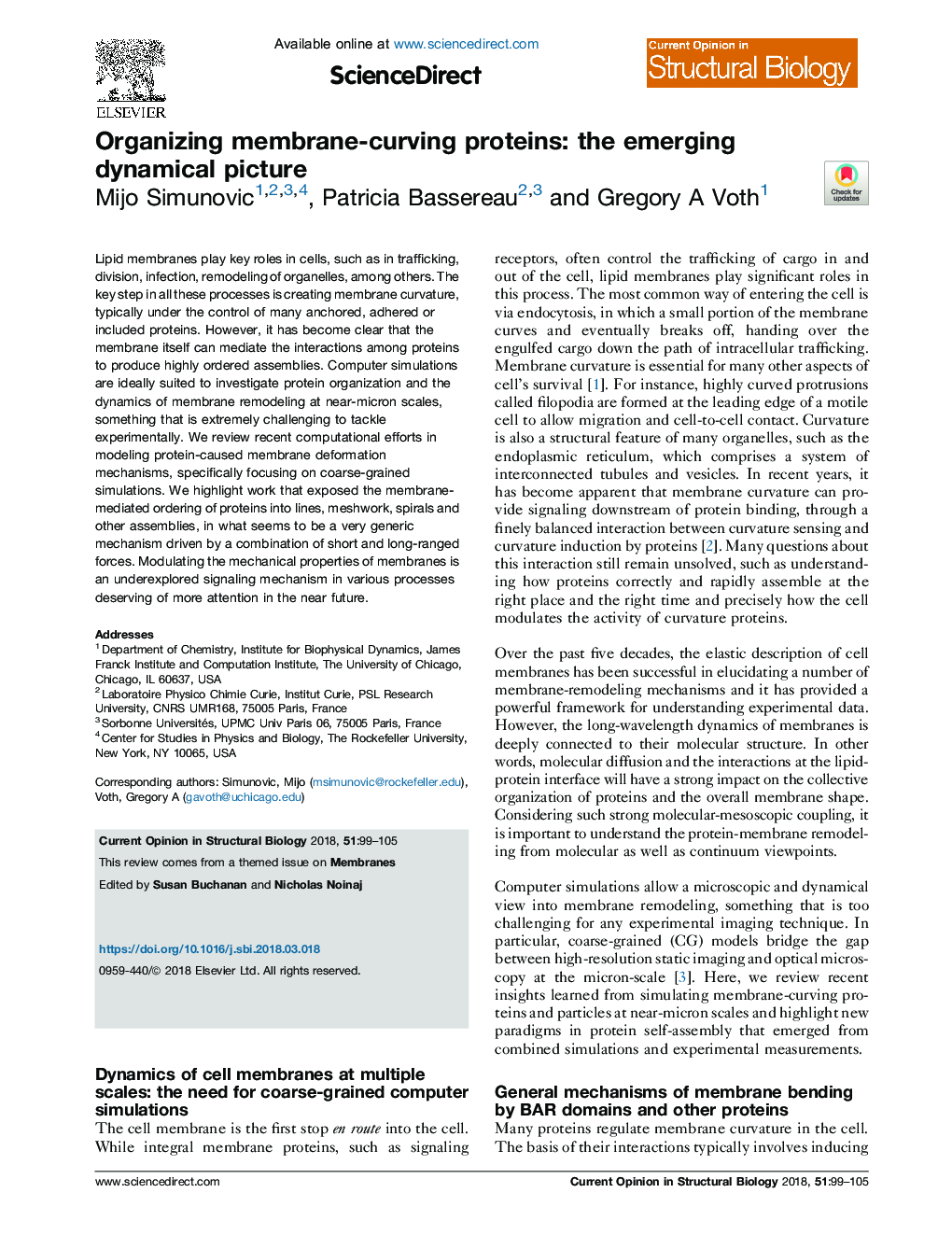| Article ID | Journal | Published Year | Pages | File Type |
|---|---|---|---|---|
| 8319378 | Current Opinion in Structural Biology | 2018 | 7 Pages |
Abstract
Lipid membranes play key roles in cells, such as in trafficking, division, infection, remodeling of organelles, among others. The key step in all these processes is creating membrane curvature, typically under the control of many anchored, adhered or included proteins. However, it has become clear that the membrane itself can mediate the interactions among proteins to produce highly ordered assemblies. Computer simulations are ideally suited to investigate protein organization and the dynamics of membrane remodeling at near-micron scales, something that is extremely challenging to tackle experimentally. We review recent computational efforts in modeling protein-caused membrane deformation mechanisms, specifically focusing on coarse-grained simulations. We highlight work that exposed the membrane-mediated ordering of proteins into lines, meshwork, spirals and other assemblies, in what seems to be a very generic mechanism driven by a combination of short and long-ranged forces. Modulating the mechanical properties of membranes is an underexplored signaling mechanism in various processes deserving of more attention in the near future.
Related Topics
Life Sciences
Biochemistry, Genetics and Molecular Biology
Biochemistry
Authors
Mijo Simunovic, Patricia Bassereau, Gregory A Voth,
